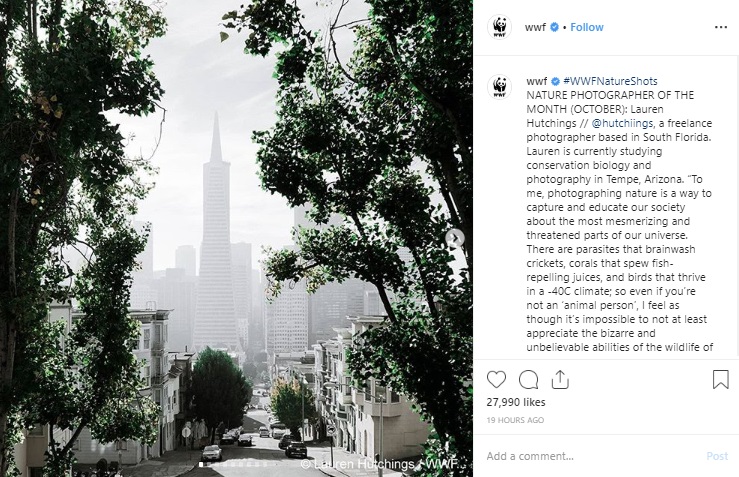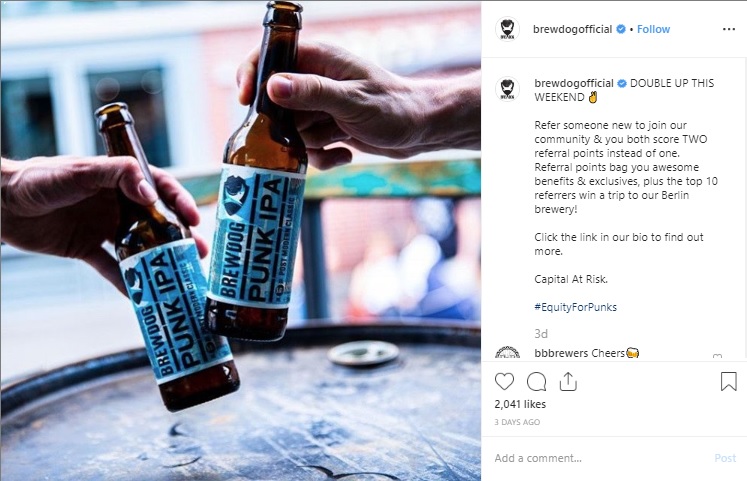Because brands belong to the people who buy them, not the people who make them - in an increasingly visual world, your brand equity is user generated.
In the time it takes you to read this article nearly 1 million pictures will have been shared on Instagram.
People now post 95 million images onto the social network every day, or 35 billion a year.
If a picture is worth a thousand words, then … well, it’s a lot of words.
Five years ago Instagram was a niche space for creatives to share their content. Today it has evolved into a mass market social platform with more than 1 billion monthly users sharing their lives through curated content.
In that time it has also become a vast marketing and now retail channel from which has the power to grow a small brand overnight.
With so much activity going on, and no matter what your brand or category, it is highly likely that someone, somewhere is sharing content around your brand and with 83% of users claiming that other people’s posts influence what they buy it is not a space to be ignored.
Gone are the days when the people who built and managed brands could control what was said about them. Chances are that your users are now creating as much visual content featuring your brand as you are if not more.
Why Instagram?
Not all social media is the same. If Twitter is where we go to express our views and vent our frustrations, and Facebook is where we connect with friends and family, then Instagram is where we go to tell the story of our life and how we want it to be.
Embraced in the right way, Instagram is a valuable asset for businesses ready to immerse themselves in the lives and culture of the people who use their products and services. And whether you see the platform as central to your marketing or not, it’s always good to know what people are saying about you when you are not in the room.

Seeing the bigger picture
User generated content provides direct, unmediated access to the lives of consumers and what they care about. People post content that expresses how they feel and what’s important to them in real time, constructing stories and narratives that they want to be associated with.
We created EVA - Enhanced Visual Analytics - to help make sense of this massive pool of pictures and to shine a light on what people are saying (or rather showing) about your brand on social media.
You may have an idea about the equity of your brand according to how it performs in your own surveys and studies, but do you know whether the UGC on platforms such as Instagram is amplifying your brand purpose - or diluting it?

Understanding and enhancing your visual brand equity.
EVA is a way of making sense of this new world and the millions of images that are posted to social media every hour.
A unique approach that uses image recognition technology, semiotic analysis and the collection of UGC at scale, it has the power to transform the way you think about the equity of your brand.
Analysing tens of thousands of images in seconds, EVA automatically clusters, identifies and quantifies themes, enabling you to see a rich and expansive picture of the content being share but structured in a way that makes it readable.
EVA informs how you can extend your brand into spaces that customers are already engaged with, using consumer-led thinking to identify new opportunity areas and ideas.
It can inspire new content development or activation by looking at what consumers and influencers are sharing around your brand or category.
And it helps you understand the cultural equity of your brand and illustrates the role that it plays in people’s lives.
A Tale of Two Beers
We conducted a comparative study looking at two brands in the same category that have significantly different levels of engagement on social media to explore what UGC reveals about how their consumers see them.
British beer brand Carling was established more than half a century ago, was one of the biggest beers brands of the 80s and sold 7.9 billion pints in 2016. It’s a big brand and arguably a household name, but how does it show up through UGC?
#carling yields 80,000 tags on Instagram but only some relate to the beer brand. Those that do are pictures of half-supped pints with little or none of the editing, styling or curating that is typical of Insta-content.
The relatively low number of UGC posts indicates that Carling doesn’t seem to be inspiring its customers to organically create content around the brand. When we analyse the content on a semiotic level, we can deduce that the brand occupies a functional rather than emotional role in its customers' lives.
Although brand awareness may be high, the UGC is reflecting a very one-dimensional brand identity, suggesting that consumers may not feel the brand has much meaning to it. This could impact future growth when we consider the key indicators of brand health according to BrandZ, are salience, meaningfulness and difference.
We also looked at Brewdog, which launched 12 years ago with a mission to make “craft beer for the people”. The enfant terrible of the beer category, #brewdog surfaces more than 610,000 posts which are faithful to the brand.
The content paints a far richer picture of the role the brand plays in users’ lives - colourful cans held aloft against graffitied city walls, pints placed next to posing pups and groups of hipster pals toasting the start of the weekend.
By playing a clear and purposeful role in its consumers’ lives and creating a brand world that people want to be part of, Brewdog has acquired a symbolic meaning that people are happy to appropriate and incorporate into their online identity.
It’s no surprise then that Brewdog is one of BrandZ’s top 3 fastest growing UK brands of 2019 and grew 40% on last year. WPP’s BrandZ report uses a unique methodology combining financial value (data from Kantar) with Brand Contribution (data from BrandZ) to calculate a brand’s value and predict future growth or otherwise.
By training a forensic eye on how people connect with your brand via the images they post online, EVA enables you to identify where your ‘earned equity’ truly lies, and most importantly how you can better engage to build that equity.

By Izzy Pugh, Partner, Global Lead, Human & Cultural Practice and Hari Blanch Bennett, Senior Consultant, Human & Cultural Practice



